Table of Contents
Perspectives
Review Article
General Contents
- Site and Rate of Occlusive Disease in Cervicocerebral Arteries: A CT Angiography Study of 2209 Patients with Acute Ischemic Stroke
The authors used CTA to assess arterial stenosis and occlusion in an ischemic stroke population arriving at a tertiary stroke center within 24 hours of symptom onset to obtain a comprehensive picture of occlusive disease pattern. Extra- and intracranial pathology, defined as stenosis of ≥50% and occlusions, were registered and classified into 21 prespecified segments. In the 50,807 arterial segments available for revision, 1851 (3.6%) abnormal segments were in the ischemic (symptomatic) territory and another 408 (0.8%) were outside it (asymptomatic). In the 1211 patients with ischemic stroke imaged within 6 hours of symptom onset, 40.7% had symptomatic large, proximal occlusions. They conclude that CTA in patients with acute ischemic stroke shows large individual variations of occlusion sites and degrees. Approximately half of patients have no visible occlusive disease, and 40% imaged within 6 hours show large, proximal segment occlusions amenable to endovascular therapy.
- A Multiparametric Model for Mapping Cellularity in Glioblastoma Using Radiographically Localized Biopsies
Ninety-one localized biopsies were obtained from 36 patients with glioblastoma. Signal intensities corresponding to these samples were derived from T1-postcontrast subtraction, T2-FLAIR, and ADC sequences by using an automated coregistration algorithm. Cell density was calculated for each specimen by using an automated cell-counting algorithm. T2-FLAIR and ADC sequences were inversely correlated with cell density. T1-postcontrast subtraction was directly correlated with cell density. The authors conclude that the model illustrates a quantitative and significant relationship between MR signal and cell density. Applying this relationship over the entire tumor volume allows mapping of the intratumoral heterogeneity for both enhancing core and nonenhancing margins.
- Clinical and Imaging Characteristics of Diffuse Intracranial Dolichoectasia
The authors retrospectively reviewed a consecutive series of patients with diffuse intracranial dolichoectasia and compared demographics, vascular risk factors, additional aneurysm prevalence, and clinical outcomes with a group of patients with vertebrobasilar dolichoectasia. Twenty-five patients had diffuse intracranial dolichoectasia, and 139 had vertebrobasilar dolichoectasia. Patients with diffuse intracranial dolichoectasia were older than those with vertebrobasilar dolichoectasia and had a higher prevalence of abdominal aortic aneurysms, other visceral aneurysms, and smoking history. Patients with diffuse intracranial dolichoectasia were more likely to have aneurysm growth. They conclude that the natural history of patients with diffuse intracranial dolichoectasia is significantly worse than that in those with isolated vertebrobasilar dolichoectasia.
- Risk of Thrombus Fragmentation during Endovascular Stroke Treatment
The authors evaluated the potential relationship between thrombus histology and clot stability in 85 patients with anterior circulation stroke treated with thrombectomy. The number and location of emboli after retrieving the primary thrombus, the number of maneuvers, and TICI scores were evaluated. H&E and neutrophil elastase staining of retrieved clots was performed. An inverse correlation between maneuvers required for thrombus retrieval and the number of distal and intermediate emboli was observed. Younger patients were at higher risk for periprocedural thrombus fragmentation. Bridging thrombolysis tended to be associated with fewer maneuvers but more emboli. They conclude that younger age, easy-to-retrieve thrombi, and bridging thrombolysis may be risk factors for periprocedural thrombus fragmentation. Higher neutrophil levels in the thrombus tissue were related to an increased risk of periprocedural thrombus fragmentation.
- Hindbrain Herniation in Chiari II Malformation on Fetal and Postnatal MRI
The authors examined the neuroimaging findings with a focus on hindbrain herniation and ventricular size in fetuses with open spinal dysraphism and compared them with postnatal imaging features in groups undergoing prenatal-versus-postnatal repair. Thirty-two of 102 (31.3%) fetuses underwent in utero repair of open spinal dysraphism; 68.6% (70/102) underwent postnatal repair. Of those who underwent prenatal repair 81.3% (26/32) had resolved cerebellar ectopia postnatally. Of those who had severe cerebellar ectopia (grade 3) that underwent postnatal repair, 65.5% (36/55) remained grade 3, while 34.5% (19/55) improved to grade 2. They conclude that most fetuses who undergo in utero repair have resolved cerebellar ectopia postnatally.
- Intraforaminal Location of Thoracolumbar Radicular Arteries Providing an Anterior Radiculomedullary Artery Using Flat Panel Catheter Angiotomography
Ninety-four flat panel catheter angiotomography acquisitions obtained during the selective injection of intersegmental arteries providing an anterior radiculomedullary artery were reviewed. The location of radicular arteries could be ascertained in 78/94 flat panel catheter angiotomography acquisitions. Fifty-three acquisitions (67.9%) were on the left side, and 25 (32.1%), on the right, between T2 and L3. The arteries were found in the anterosuperior quadrant in 75 cases (96.2%), in the posterosuperior quadrant in 2 (2.6%), and in the anteroinferior quadrant in 1(1.3%). Needle placement in the anterosuperior quadrant (subpedicular approach) should be avoided during transforaminal epidural steroid injection. The authors advocate the posterolateral approach that allows placing the needle tip away from the documented position of ARMA contributors within the neural foramen, reducing the risk of intra-arterial injection or injury to the spinal vascularization.



